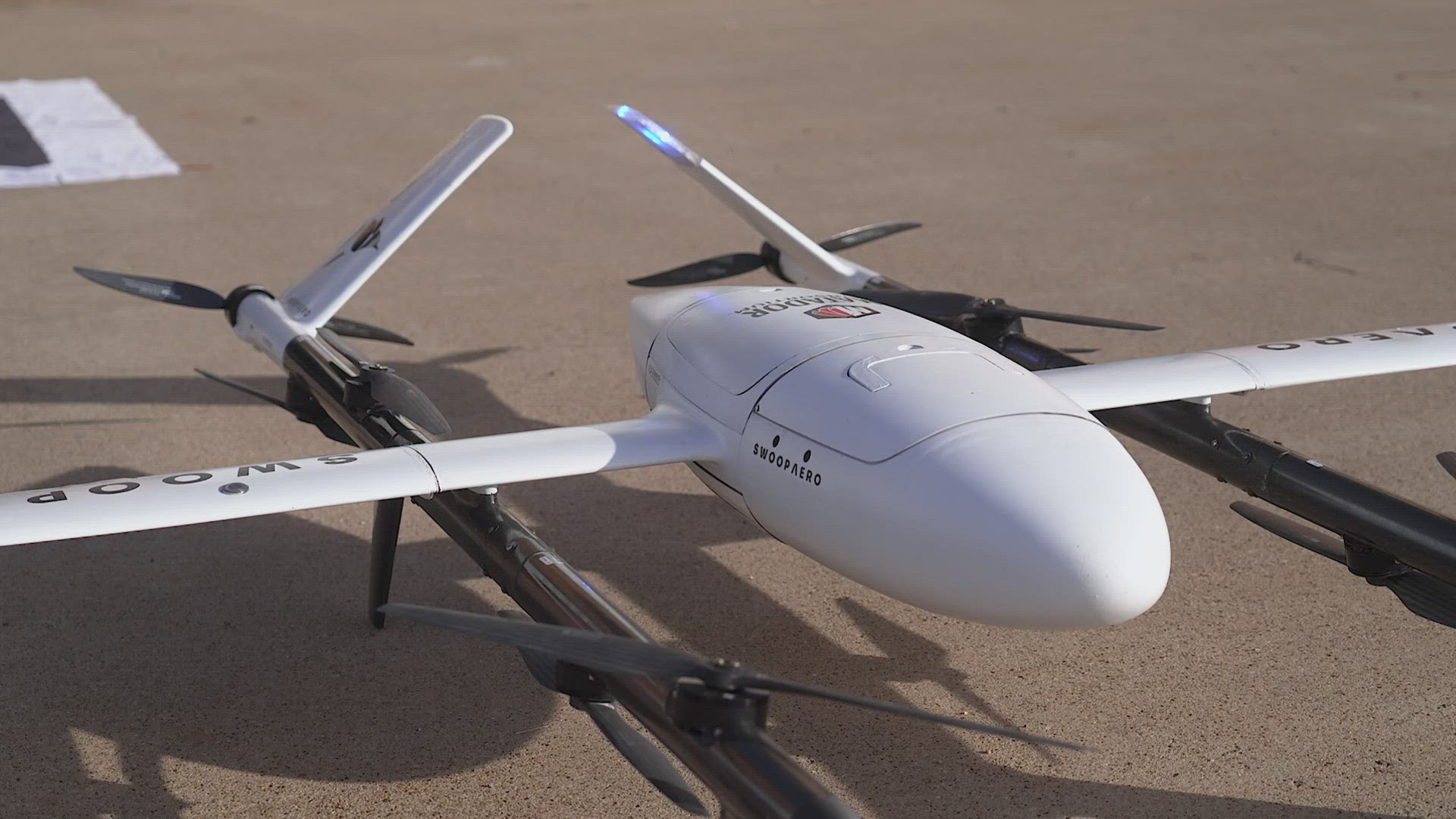For rural communities in the Permian Basin, it can be hard or challenging to get access to much needed health care.
Now, new drone technology will help make that a lot easier.
Thanks to these drones health care essentials like medications, vaccines and test results will just be a quick flight away for remote and rural areas giving them easier access to health care.
“Having the ability to bring healthcare to your community is not going to solve all the problems but it could solve a lot of the problems of access combined with the rural healthcare program and physicians and the telehealth program all these things combined give our communities greater access,” said Ty Harmon, co-founder of Matador UAS Consortium.
This will also help to replace the long trips healthcare professionals have to take to deliver or pick up medication, bridging the gap for healthcare professionals and their patients.
“What that does is if they're having a tele-health visit that allows the drone to carry important cargo to the patient and or cargo back to the health care provider such as test results,” said Phil Sizer, associate vice president for research and innovation at TTUHSC and co-founder Matador UAS Consortium.
The process is as easy as 1, 2, 3.
“It's as simple as using your index finger to push a button hold it for three seconds then the plane automatically counts down launching on its own flies a route over 80 miles last week and then lands on its own with GPS enablement,” Harmon said. “We have a four year approval from FAA for 134 mile route that runs from Fort Stockton down to Alpine and to Presidio but we also focusing on other routes in the panhandle area.”
Harmon is hoping these drones fix a problem impacting most rural communities.
“It is a panhandle problem. It is a Texas problem but more importantly it is a problem across the United States and if we can solve one piece of the healthcare problem then we've done our job,” Harmon said.

